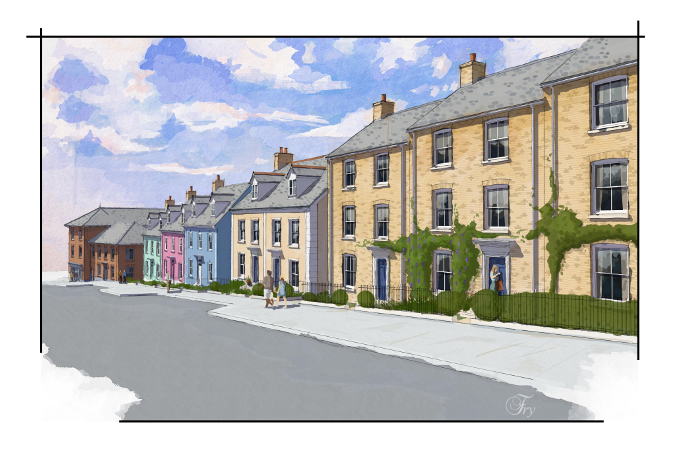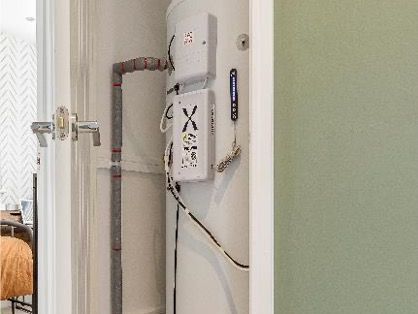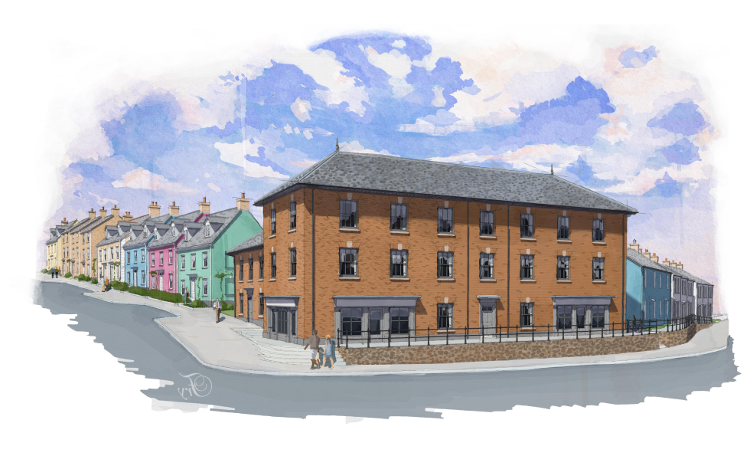Nansledan
Updated: 11 May 2024
Location: Newquay
Developer: CG Fry & Son Builders
Number of units: 62 houses and apartments
Aim(s) of Project: To meet the LETI 2030 embodied carbon standard, and reduce CO2 emissions by 60% without impacting design
Construction method: Traditional masonry
Energy Compliance method: SAP 10
Overheating compliance method: TM59
Construction start: January 2023
Construction finish: May 2026

Overview of Project and Specification
CG Fry is building apartments and houses in masonry for the Duchy of Cornwall.
The Duchy set a target of 200 kgCO2/m2 for upfront embodied carbon and this was achieved by changing lintels to locally made concrete using 100% recycled aggregate, switching metal stud partitions to timber, switching the floor insulation to polystyrene, using timber spandrel panels in party walls, lime render and locally sourced concrete T-beams for floors.
At the same time, they set themselves the target of reducing regulated operational carbon use by 60%, achieved largely through the introduction of air source heat pumps.



Key learnings
- It is possible to build traditional blockwork cavity walls and meet the 200 kgCO2/m2 upfront embodied carbon target.
- There is a lot of work to do on embodied carbon. Information from suppliers can be difficult to obtain. Although there are some exceptions. In this case the concrete supplier.
- Low or no carbon cement is urgently needed.
- Distance does not seem to be a major issue on carbon emissions calculations, so timber from Scandinavia can be better than locally sourced concrete blocks.
- The company has decided to fit 6m2 of solar PV to all private properties to improve running costs and improve EPC ratings.
- Mechanical Ventilation and Heat Recovery is being increasingly used to reduce outside noise.


